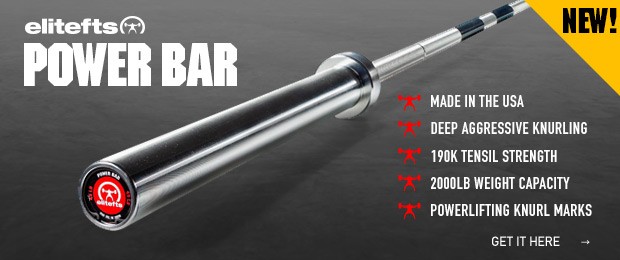
I admit to not having the social media footprint I once did. After I backed off the world-class platform, I went dark for awhile. As I came back to social media, it was clear that in strength sports, you are quickly forgotten. Not a big deal for me, as I always lifted for myself. The thing is, I was always driven to help others, and this drive is still as strong today. It is why I continue to train and learn, and why I am always looking for ways to be a better coach for my clients. All of this being said, a few days back, an Instagram follower and a semi-local lifter I know asked me a question about dynamic training. As soon as I read the message, I knew it needed to be an article. Figured my blue-collar style would be an interesting perspective as well.
In the DM, he mentioned that he had never really done speed work in a true sense but had been told about it. With him being a good lifter and an intelligent person, I am sure that he had done his own research. He went on to say that he knew that F=M x A but that this is just an expression of force, which it is. Basically, he asked me if I could help him see through the mud on this one. Seeing through the mud is my blue-collar forte! He also talked about how he always tries to practice moving the weight as he would in a competition and that he had never seen a world record move super fast. He wondered what benefits come from dropping the weight to move it super fast when he would never do that in a competition. Solid questions that I think many lifters have.
RELATED: Speed Pull Cycle for Athletes
It is no secret that I have always used dynamic training and that I have my clients do it as well. My standpoint is that everyone can get something out of dynamic training, but the use of it may vary. I have a thrower’s background, and in college, we always lifted explosively. I also did a lot of plyometrics to help to increase force production. Once I started competing in powerlifting, I began to train like most of the powerlifters I saw or read about. Over a short period of time, I could feel my explosive power slowing down. This did not seem right to me, but I did not see lifters’ training speed. At least not until I did my first conjugate seminar with elitefts. As soon as I understood dynamic work, I thought to myself, “Well, this makes sense and is what I thought I should be doing!” From that point on, I worked on my technique and trained conjugate (dynamic included), which set me on a journey to become one of the top lifters in the world.
One of the first things I need to explain about dynamic work is accommodating resistance. This is necessary to get the most out of this type of training. When you are doing speed training, you must have accommodating resistance, or you will have to decelerate during the lift. For example, if you squat say 50 percent of your max squat, you will have to slow down at the top of the movement, or the weight will explode off your back, forcing you to catch it in an unsafe manner. If you’re slowing down to keep the bar from coming off of your back, then you’re not working your dynamic speed through the whole lift. With bands or chains, the weight will increase at the part of the movement where you get stronger. In this way, you can drive with maximal speed and force through the whole lift without letting up. It is essential to have maximal force throughout the whole lift.
Force = Mass x Acceleration is unarguable in physics, but what does it really mean to a lifter? When a shot putter throws a shot that weighs 16 pounds 70 feet, it takes a tremendous amount of force. When a powerlifter squats 1200 pounds, it takes a tremendous amount of force. One situation is lighter weight with greater speed, and the other is heavy weight with less speed. Both require a high amount of force. So, should that shot putter train with super heavy weights like that powerlifter should? I think he can still benefit from some max effort work, but his goal is to be super explosive with lighter weights. He would need a higher level of dynamic training for the best benefit. Still, I have seen some throwers lift some seriously heavy weight even though they focus more on explosive power. On the flip side, should a powerlifter spend most of his time training with lighter weights, moving quickly? Yes, dynamic training will help, but it may be somewhat heavier, and powerlifters will still need to train with a lot of maximal weights as well. I have also seen some powerlifters move weight insanely fast. So, both athletes can benefit from both max and dynamic training. The difference is their goals and the frequency of each style of training. All strength is about force production.
No matter how you look at it, force plays a role in all athletics. Name me a sport in which weight and speed do not play a factor? How much force you put behind a baseball is how fast and far it will go. The force behind the swing of a tennis racket says how fast it will be hit. When two linemen crash into each other, the one that generates the most force usually wins.
So, let’s think about this in terms of lifting. Say you have a bench press loaded with 225. Is it easier to push it up slowly or quickly? The answer is quickly—try it. So, would it be easier to start very explosively or build up speed gradually? The answer is, again, explosively and quickly. The more quickly you can generate your maximal force, the more quickly the weight moves, and the easier the lift will be. Now, anytime you are lifting a true max, it will probably not move super quickly, but the more quickly you reach the maximal force output, the easier it will be to get the weight moving. I have seen Olympic lifters who rarely train for maximal deadlifts put up huge deads! This is because even though they rarely do max deads, they are always pulling cleans and snatches with maximal force off of the floor. For the powerlifter, learning to generate force quickly is important, and this is best done with lighter weights that have accommodating resistance.
True dynamic sessions are very taxing, and I would say mine are usually more intense than my max effort sessions. I think this is an aspect that many lifters do not see or understand. Proper dynamic sessions can help a lifter to get in much better shape. It can help many athletes by mimicking their sports and teaching muscular recovery. The dynamic sessions give us an outstanding opportunity to work on technique and to train the mental side of lifting. Most dynamic sessions’ main movements will be 10 to 12 sets of two or three reps plus warm-ups. This a good amount of time under the bar. Dynamic sessions are supposed to move quickly and will wear a lot of lifters down. This fast pace and exhaustion is a great chance to work on technique. The weights are still medium light, but as you get tired, they feel heavy. With your heart rate up, and as you try to keep the pace, it is tough to keep the focus on solid technique. At this point, you tend to feel every little thing. If your groove is right, the weight feels much lighter, and every misgroove feels way heavier. This good or bad technique can also easily be seen by the speed of each lift. So, you’re getting tired, and it is hard to focus, but you have to toughen up to maintain the speed and keep the weight feeling light. You’re getting big rewards without the stress of such heavy weights and a better ability to feel what is going on.
VIDEO: Using Bands and Chains Correctly with Chad Aichs
Let’s face it: We have all seen the grinders bust out some heavy lifts. On the other end, we have seen the person who is lightning fast, but five more pounds and he or she misses the lift. We are all individuals with our own strengths and weaknesses. I have athletes who don’t benefit from a ton of dynamic work, so I don’t have them do it as often. Other athletes get a lot out of it, so I have them do it more often. Some athletes can do it in waves, working more dynamically when they feel that they are lacking speed. Then, they drop it off and maintain that force production for awhile. It is all individual to the athlete or lifter.
I recently heard Jim Wendler on the elitefts table talk. He broke down conjugate training by saying, “Conjugate is simply the raising of several levels at once.” I could not agree more with this statement. We need to train max strength, dynamic strength, and rep strength. We also need to train flexibility, mobility, and conditioning. If you are missing any of these, you will at some point pay the price. The amount of training you should do on each will vary depending on the sport and individual. Force production is deeply important for all sports and lifting. In my opinion, if you are not training dynamically, you have a hole in your training.











6 Comments